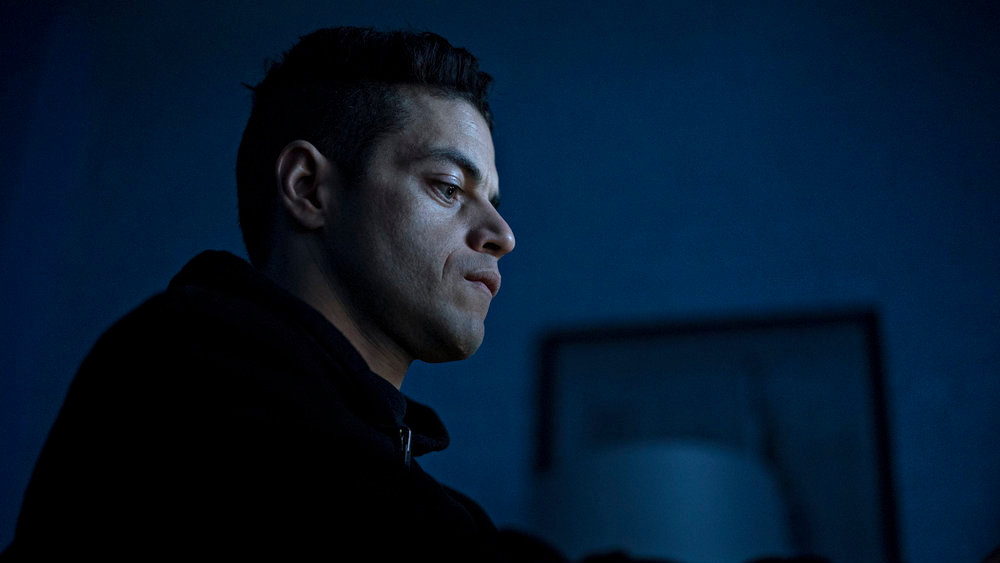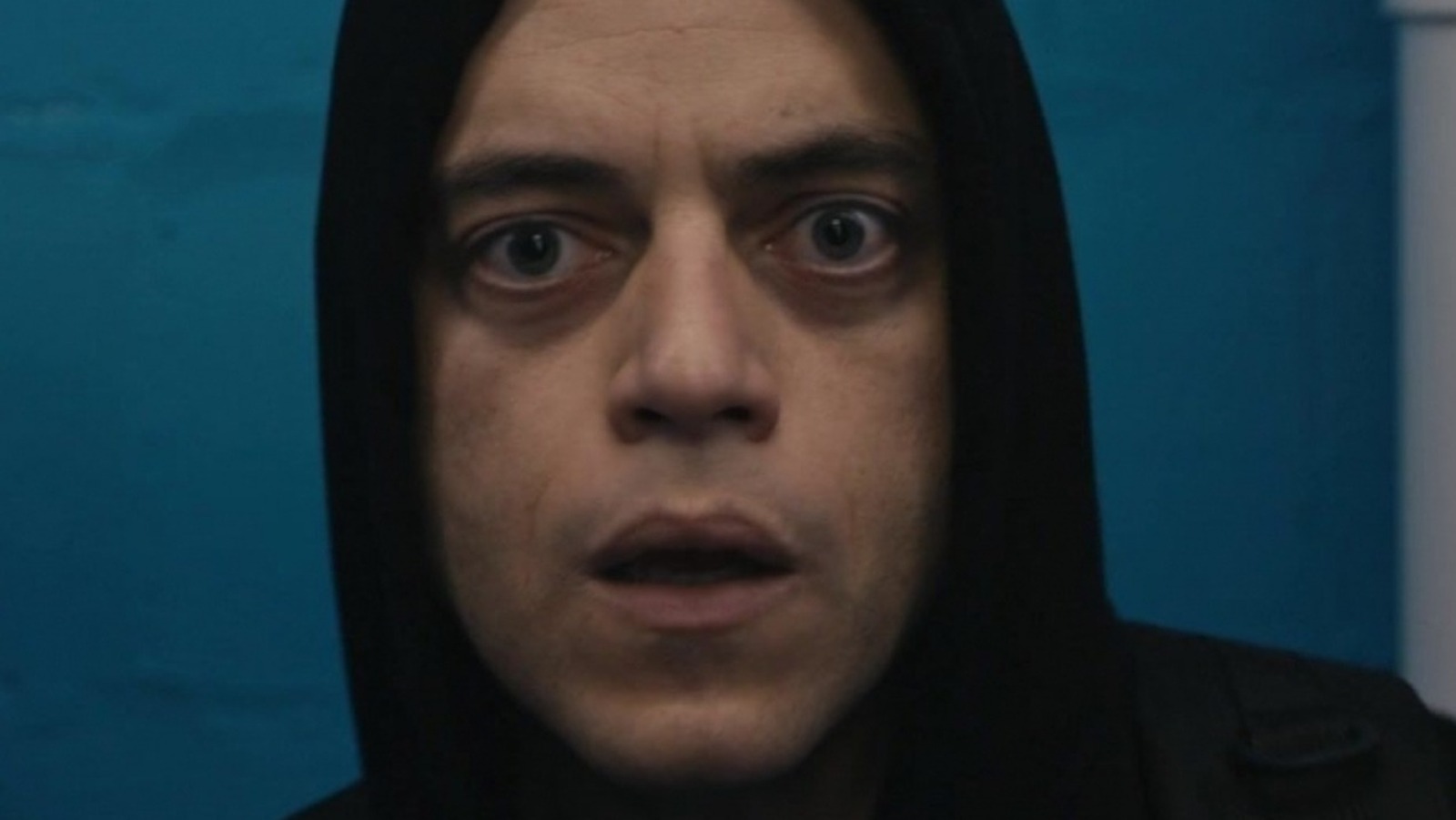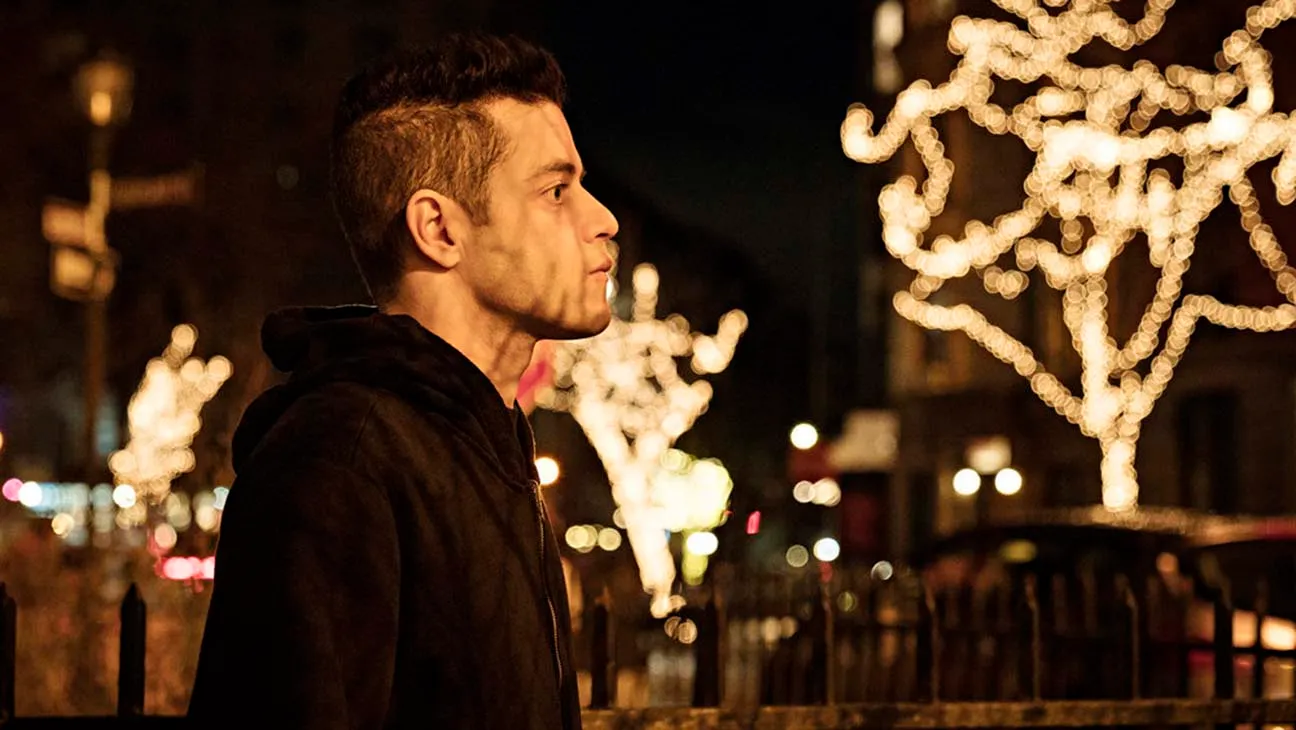Elliot Alderson, the central character of Mr. Robot, has always seemed more archetypal than human. Although he is portrayed by Rami Malek, within the show, he often appears exaggerated. Elliot is an anxious, wide-eyed hacker whose abilities seem almost superhuman at times. His mannerisms, behaviors, and intense focus resemble those of a fictional hero rather than a real person.
Throughout four seasons, he wears his black hoodie like a uniform, reflecting both his identity as a hacker and his separation from ordinary human life. His traits, combined with chemical dependencies and obsessive patterns, give him a heightened, almost mythic presence.
The final episodes of Mr. Robot reveal why Elliot seemed so larger-than-life. Metaphorically, Elliot was a fictional character because the person viewers followed throughout the series was not truly him. Instead, the main personality in control was an alternate identity known as “The Mastermind.”
This personality was driven by anger, vengeance, and a desire to protect the real Elliot from trauma. Over the course of the series, viewers followed the actions of the Mastermind, unaware that the real Elliot had been trapped inside his own consciousness. This revelation recontextualizes the entire story, showing that much of what we assumed about Elliot was filtered through one of his many fragmented identities.

Elliot’s Alternate Universe Reveals His Mind’s Complexity and Multiple Protective Personalities
In the finale, the show presents what appears to be an alternate universe where Elliot lives a different, happier life. In this world, he is the CEO of Allsafe Cybersecurity, on the verge of securing a major client, and engaged to Angela Moss. He also has loving parents and a stable home life. At first, both Elliot and the audience believe that Whiterose’s plan to jump into an alternate universe has succeeded. The narrative creates the illusion of a parallel world, providing hope that Elliot could escape his trauma and live a normal life. However, this reality is ultimately revealed to be a construct of Elliot’s own mind, a safe space created by the Mastermind.
The alternate universe is not real. In the actual world, Elliot stopped Whiterose’s plan, prevented a nuclear disaster, and helped save countless lives. The Mastermind, who had been in control, altered Elliot’s perception to protect him and carry out the heroic acts attributed to him. The real Elliot remained trapped in the fantasy world, living out idealized versions of his dreams while the Mastermind handled the dangers of reality. This distinction between the real and the constructed reality emphasizes the complex psychological structure of Elliot’s character and highlights the lengths to which his mind went to protect him from trauma.
The finale also explains that Elliot’s mind contains multiple personalities. These include the Mastermind, Mr. Robot as the Protector, his mother, Magda as the Persecutor, Young Elliot, and the Voyeurs, who represent the audience. Each personality emerged to help Elliot process trauma or maintain his psychological stability.
Mr. Robot appeared first after Elliot experienced the death of his father and a traumatic fall, representing protection and guidance. The Persecutor personality embodied guilt and responsibility for the abuse Elliot suffered. Young Elliot allowed him to process early trauma, while the Voyeurs were created to observe events as an audience. The Mastermind, the last to emerge, formed to channel Elliot’s rage into action against the outside world.

The Mastermind Protects Elliot While Returning Him to Reality and Reuniting Family
The Mastermind assumed full control to stop Evil Corp, confront other threats, and protect Elliot at all costs. While the Mastermind worked to reshape reality and save the world, the real Elliot lived in a fantasy where he had a stable life, loving parents, a career, and Angela as his fiancée. Darlene was absent from this constructed reality because her presence could trigger the real Elliot to wake from his mental prison. The Mastermind’s work was both heroic and selfless. He created a safe space for Elliot while fighting external battles that the real Elliot could not face.
In the series’ final moments, the Mastermind begins to accept his role and allows Elliot to return to the real world. Darlene becomes the key figure to guide Elliot back to reality, confirming that the events they experienced were real. The two siblings share a unique bond that allows Elliot to reconcile with his past and integrate his fractured psyche. The series emphasizes that the Mastermind’s actions were necessary to protect both Elliot and the world, providing a sense of closure while acknowledging the cost of such psychological complexity.
The show concludes with the Mastermind and the other personalities seated in a theater, watching the projection of Elliot’s life. The final shot focuses on Elliot’s iris as Darlene greets him. The real Elliot has returned home, the world has been saved, and the Mastermind’s work is complete. The series ends with a poignant reunion, highlighting themes of love, protection, and reconciliation. Elliot has not received everything he dreamed of, but he has returned to the people and reality that matter most. This finale provides an emotionally satisfying conclusion to a story about trauma, identity, and the extraordinary complexities of the human mind.



